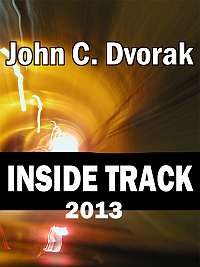
Mini nuclear plants to power 20,000 homes
Nuclear power plants smaller than a garden shed and able to power 20,000 homes will be on sale within five years, say scientists at Los Alamos, the US government laboratory which developed the first atomic bomb.
The miniature reactors will be factory-sealed, contain no weapons-grade material, have no moving parts and will be nearly impossible to steal because they will be encased in concrete and buried underground.
The US government has licensed the technology to Hyperion, a New Mexico-based company which said last week that it has taken its first firm orders and plans to start mass production within five years. ‘Our goal is to generate electricity for 10 cents a watt anywhere in the world,’ said John Deal, chief executive of Hyperion. ‘They will cost approximately $25m [£13m] each. For a community with 10,000 households, that is a very affordable $250 per home.’















Cripes, when I saw the headline, I thought you were talking about nuke weapons. [whew!]
All sounds good until the Mossad hears about what you have in the basement.
Probably works as well as those x-ray specs I got.
Oh, well. Maybe some technologists will show up here for discussion, later.
Totally awesome… but, you know, not in my backyard…
Article is already corrected it’s $2,500 per home not $250.
This is also I’ll believe it when I see it kind of things. I always hate it when they say will start production in 5 to 10 years.
Ok, Something is missing here. It can’t be only $ 25 Million. If it’s that cheap than they could be building them fast enough. My BS meter is in the Fishy zone right now.
Need to find more info.
“could” should be “couldn’t”
John we need an Edit option
The tech does exist, and for every narrow-minded enviro-fan who hates anything with “nuke” in it there will be 10 people who want clean cheap energy.
An efficient plan will lose 2/3 of its energy as heat. How do they cool this thing?
Maybe Omama should be told about this. Since he doesn’t really have an energy plan he could start researching at least.
BTW – This system has been designed for quite a while. Too bad big oil infiltrated the enviro wacky groups 30+ years ago…
These seem kind of like Triga reactors. They are just big batteries for the most part. The problem is they will have to yank these things out of the ground every so often to bring them back to the facility to refuel them. That is by design. How long they last is dependant on how much they are used. I don’t think this is a viable solution on the large scale. It is safe for the most part but not practical.
Yes, it is just 25 Mil. $. People forget that the nuclear power is old technology. It is easy to make them cheap nowadays.
Main benefit should be to the large cities where there are many smaller plants scattered throughout already (because of high local demand). These are usually the worst polluters (ex. in NYC these small local plants are all run on diesel).
Main obstacle is not technology or even terrorists. As many noted above enviro-nuts still live in 50’s and don’t trust the cleanest energy source we already have completely engineered … Govt. should have campaign of explaining how these are good clean and safe. But than, there will be no immanent energy crisis to drive up politician power…
I was a nuclear electrician in the US Navy and after checking out http://www.hyperionpowergeneration.com/ I must say that as far as I can tell these systems have the potential to deliver on the hype.
I am curious about implementation, however. If they don’t have the ability to go “supercritical” they can’t start up. (For the uninformed: subcritical = power level going down, critical = power level stable, supercriticial = power level going up) From reading their materials, though, it seems that the power level is thermally limited in a much friendlier process than boiling off the moderator the way water moderated plants are managed.
From their website: “Unlike conventional designs, the proposed reactor is self-regulating through the inherent properties of uranium hydride, which serves as a combination fuel and moderator. The temperature-driven mobility of the hydrogen contained in the hydride controls the nuclear activity. If the core temperature increases over the set point, the hydrogen is driven out of the core, the moderation drops, and the power production decreases. If the temperature drops, the hydrogen returns and the process is reversed. Thus the design is inherently fail-safe and will require minimal human oversight. The compact nature and inherent safety open the possibility for low-cost mass production and operation of the reactors.”
This makes sense as it is the hydrogen in the water that moderates the fast neutrons in a water moderated reactor.
I saw a version of something similar that was liquid sodium cooled which made me very nervous. I’d much rather have 100 pounds of uranium in my back yard than 100 pounds of liquid sodium. Uranium doesn’t explode when it comes in contact with water.
“The miniature reactors will be factory-sealed, contain no weapons-grade material, have no moving parts and will be nearly impossible to steal because they will be encased in concrete and buried underground.”
I see a recycling problem. 🙂
Honestly, I could imagine this would be good idea.
I think this is a RTG design. (sorry, I had no interest in fishing for informations in the sea of green field marketing blah)
A RTG could be powered by low half life materials and potentially even our current atomic waste.
Key would be responsible waste disposal. The most important unresolved issue around nuclear power.
Accidents and Weapons materials are problems, but the most obvious is waste. And this is still not solved!
I stay sceptical, but open minded.
# 18 Deep-Thought said, “The most important unresolved issue around nuclear power.”
Can you say subduction zone?
That is $2,500.00 a home…
Toshiba had this on the market already right?
# 20 GoodLife said, “Toshiba had this on the market already right?”
Basically, except theirs can run up to 40 years.
Please, everyone stick your fingers into your ears and close your eyes.
Can’t have us off oil. Nope.
#9 – yes it’s $25 million each, but as #20 points out, the CEO has difficulty with basic math.
My guess is, they cost $25 million each, if the government agrees to order 1,000 of them. Then after the first 10 are built it’ll be revealed that the real cost is $250 million each – so they’ll build 10 more then scrap the project.
My main problem with nuclear power is that it’s non-renewable, and what the heck do you do with the radioactive waste? This material is radioactive for tens of thousands of years.
Regarding Waste and safety.
Here is a text (machine translated) from the German Wikipedia site on RTG.
Bare in mind, the Soviet Union was once a super power too!
PS: #19, This is a smoke screen.
Here the text:
Terrestrial applications in the former USSR
Because of the large total quantity of radioactive material is also used in the successor states of the USSR seen as problematic. There were from 1960 until in 1980 about 1500 radioisotope generators manufactured. They were used for purposes such as power away from lighthouses located or military radio stations constructed, although because of the high performance requirements of these applications large quantities of radioactive material were used [11].
All these devices have now exceeded their service life. Due to the slow dismantling and disposal by the competent authorities as well as the most inadequate security of these installations, there was at least until 2006 to release radiant material by corrosion, and particularly through metal thefts [12].
Georgia also has been reported that woodcutters in the forests liegengelassenen components of the isotope batteries former military mobile radio found [13].
According to figures from the U.S. Department of Energy will remain at the end of 2007 still more than 850 disposed radioisotope generators in Russia [14]
#23 Umm, ever heard of reprocessing? Ever hear of the thousands of nuke weapons we should get rid of? Ever hear of a thing called the Earth’s mantle?
The level of FUD the oil industries has polluted Americans with is staggering. Pretty soon even the 3rd world will be nuke powered while we in the US will still be burning crap and polluting.
They had this on Fox News this morning as well (insert joke here). The one “catch” to this is that the device produces nuclear waste (think football size) that has to be removed every 15 years. That waste could be used to produce a dirty bomb.
Solve that problem (including how you get the waste out of a ‘sealed’ device) and it will work. Until then, ain’t gonna happen.
#26 “Solve that problem (including how you get the waste out of a ’sealed’ device) and it will work. Until then, ain’t gonna happen.”
It’s going to happen. The orders are in. It just won’t happen in the U.S. But, we have lot of coal we can burn. Cheaper too.
pedro…no tab, just add water.
I think this is a fabulous idea with very little downside. Stealing the waste to make a dirty bomb is FUD. Assuming football sized waste, transportation is a non-issue, and the trade in pollution for this is well worth the cost.
The biggest problem is going to be the energy industry having their cheese moved.
BTW…encapsulate those footballs in teflon and dump them into the deepest Pacific ocean trench. End of problem.
#28 “BTW…encapsulate those footballs in teflon and dump them into the deepest Pacific ocean trench. End of problem.”
Yep, subduction zones where the crust is sucked down into the mantle.
Toshiba has a similar model that works on a different chemical process for a self-contained and balanced reaction, totally factory sealed with projected 40 year lifespan. If done properly this could be a good thing. Like first, have a complete infrastructure for recycling these reactors and include costs for this in the cost per unit. Oh and of course, if nuclear/toxic waste is to be dealt with, that should be done responsibly, and it’s costs also reflected in price per kilowatt. Sorry just dreaming again, this is just a clever rouse, just another way to push the problem off on the next generation. Hopefully this will be limited to military use.
#26 I agree with James (insert joke here X 2). It will show up in other countries first such as India.
I’m every inch an environmentalist but I’d have one in my backyard. It just take money to make it work.